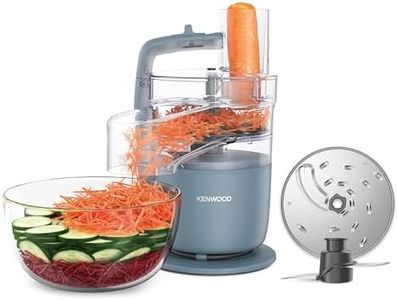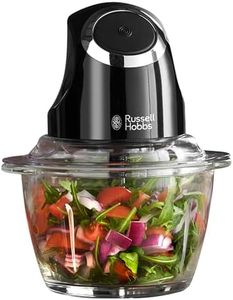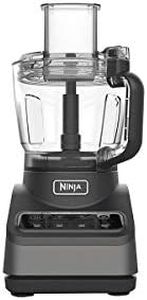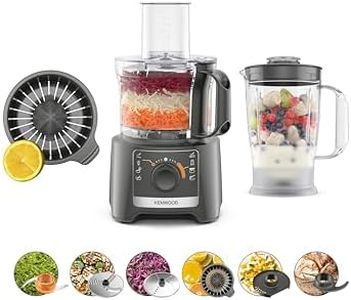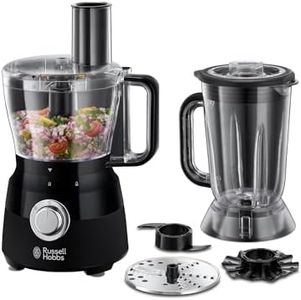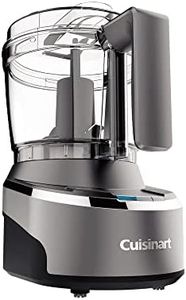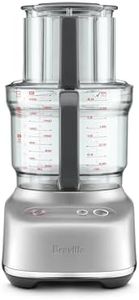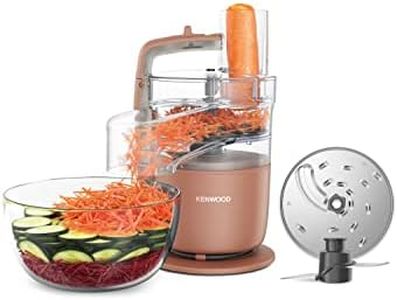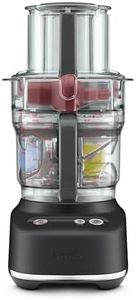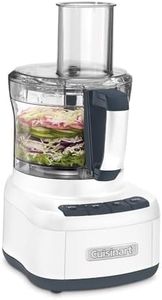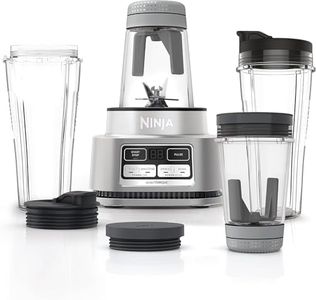We Use CookiesWe use cookies to enhance the security, performance,
functionality and for analytical and promotional activities. By continuing to browse this site you
are agreeing to our privacy policy
10 Best Food Processors
From leading brands and best sellers available on the web.Buying Guide for the Best Food Processors
Choosing the right food processor can make preparing meals much easier and faster. Food processors come in different shapes and sizes, but at their core, they help you perform tasks like chopping, slicing, grating, and pureeing food with minimal effort. The best choice for you depends on how much and how often you cook, the types of foods you prepare, and how much space you have in your kitchen. By understanding the most important features and how they fit your cooking style, you can pick a food processor that will be a valuable helper in your kitchen.Bowl CapacityBowl capacity tells you how much food the processor can handle at once. Small capacities (around 3-5 cups) are good for individuals or couples who prepare small-batch sauces or dips. Medium sizes (about 7-10 cups) work well for most families and can handle typical slicing, chopping, or dough making. Large capacities (11 cups or more) are ideal for those who cook for many people or like to batch-prep ingredients. Think about how much food you normally need to process at one time—too small and you'll need to work in batches; too large and it's harder to clean and store.
Motor PowerMotor power, measured in watts, shows how strong the food processor is. Lower wattage (around 300-500 watts) is fine for basic tasks like chopping veggies or making sauces. Mid-range (600-900 watts) can handle thicker mixes like dough and cheese. High power (over 1000 watts) is suited for heavy-duty use or tough ingredients, like kneading large amounts of dough or chopping hard vegetables. If you plan to do more than casual food prep, look for a processor with a stronger motor to avoid straining or overheating.
Attachments and BladesAttachments and blades let you do different tasks with your processor. Most machines come with an S-shaped blade for chopping and pureeing, as well as slicing and shredding disks. Some offer specialty blades for dough, julienne, or even citrus juicing. More attachments mean more versatility, but also more parts to store and clean. If you only need basic functions, a simpler set may be best. If you love experimenting in the kitchen, look for one with multiple blades and discs to suit your cooking ambitions.
Controls and Speed SettingsControls and speed settings determine how much control you have over the chopping and mixing. Some models offer just an on/off and pulse button, making them very straightforward. Others include multiple speed levels, giving more control for delicate tasks like kneading or finely chopping. If you value simplicity and mostly do the same kinds of tasks, basic controls will serve you well. If you want the flexibility to handle a variety of textures, more speeds could be useful for you.
Ease of CleaningEase of cleaning is about whether the parts are dishwasher safe or require hand washing, and how easy it is to take the processor apart. Machines with fewer parts are generally easier to clean, but may not be as versatile. If you dislike cleaning up, look for dishwasher-safe and simple designs. If you don’t mind some extra washing for the sake of extra features, then picking a model with more attachments is fine.
Size and StorageSize and storage refer to both the physical footprint of the food processor and the number of accessories that require storage. Compact models are easier to fit on your counter or in a cabinet, but may have fewer features or smaller capacity. Larger models take up more space, but can handle bigger jobs and often offer more functions. Think about your kitchen space and how often you are willing to take the appliance in and out of storage, or whether you want it permanently on your countertop.

